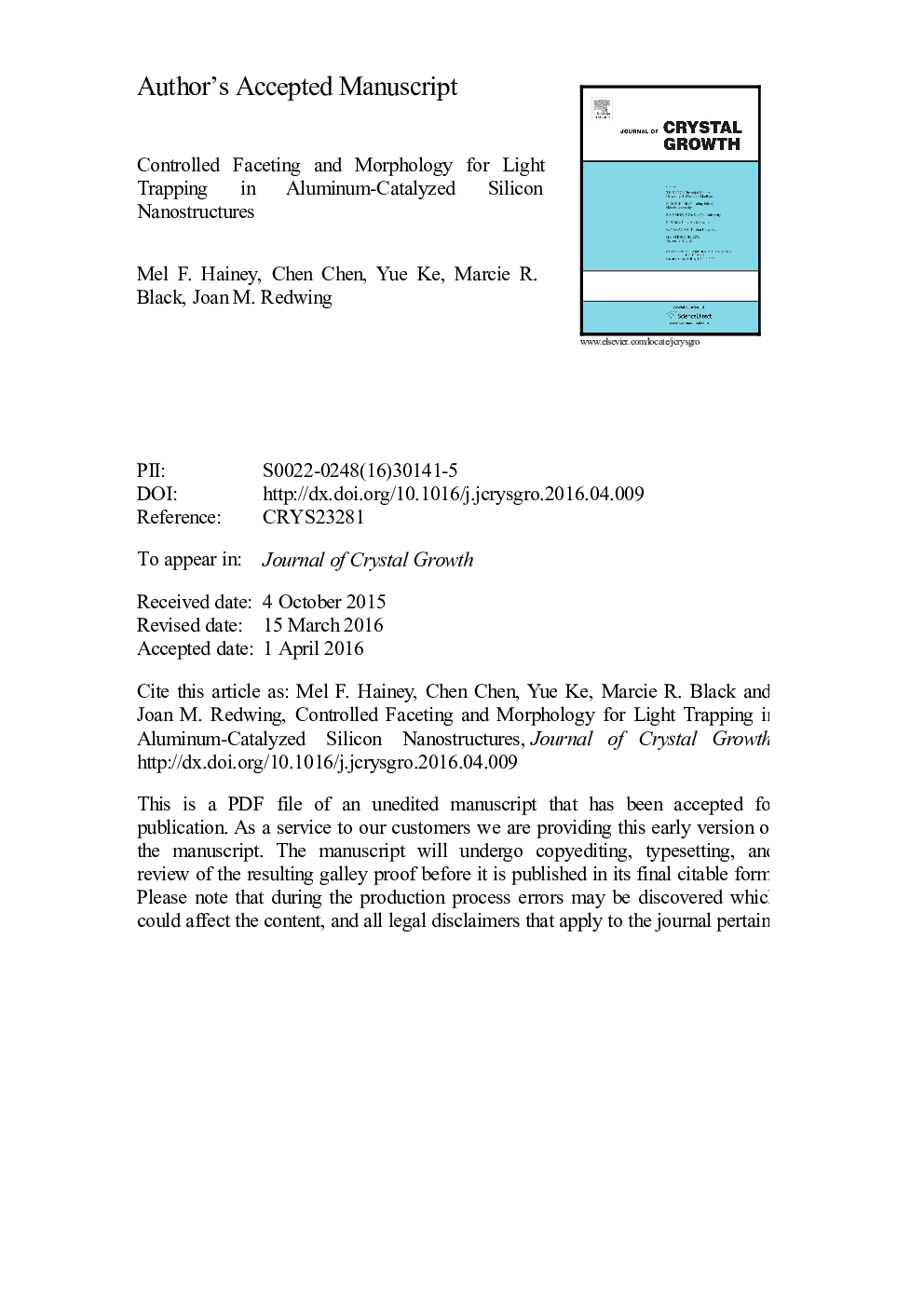| Article ID | Journal | Published Year | Pages | File Type |
|---|---|---|---|---|
| 5489928 | Journal of Crystal Growth | 2016 | 16 Pages |
Abstract
Aluminum-catalyzed silicon nanopyramids grown using low-pressure chemical vapor deposition (LPCVD) are presented as an approach to silicon surface texturing. The nanopyramids are grown by vapor-liquid-solid growth using aluminum thin films on silicon. Silicon nanowires with hexagonal cross-sections are formed at a growth temperature of 650 °C; as the temperature is increased to 700 °C, the wires become pyramid-shaped with triangular cross-sections. The silicon nanopyramids are single-crystal and grow in the <111>direction with (112) facets, as confirmed by transmission electron microscopy. Pyramid tapering increases with increasing growth temperatures and the pyramid arrays grown at 700 °C show reflectivities between 4 and 6% between 400 nm and 800 nm and appear black to the eye. Based on these results, aluminum-catalyzed nanopyramids present themselves as a plausible alternative to etch-based silicon surface textures.
Keywords
Related Topics
Physical Sciences and Engineering
Physics and Astronomy
Condensed Matter Physics
Authors
Mel F. Jr., Chen Chen, Yue Ke, Marcie R. Black, Joan M. Redwing,
